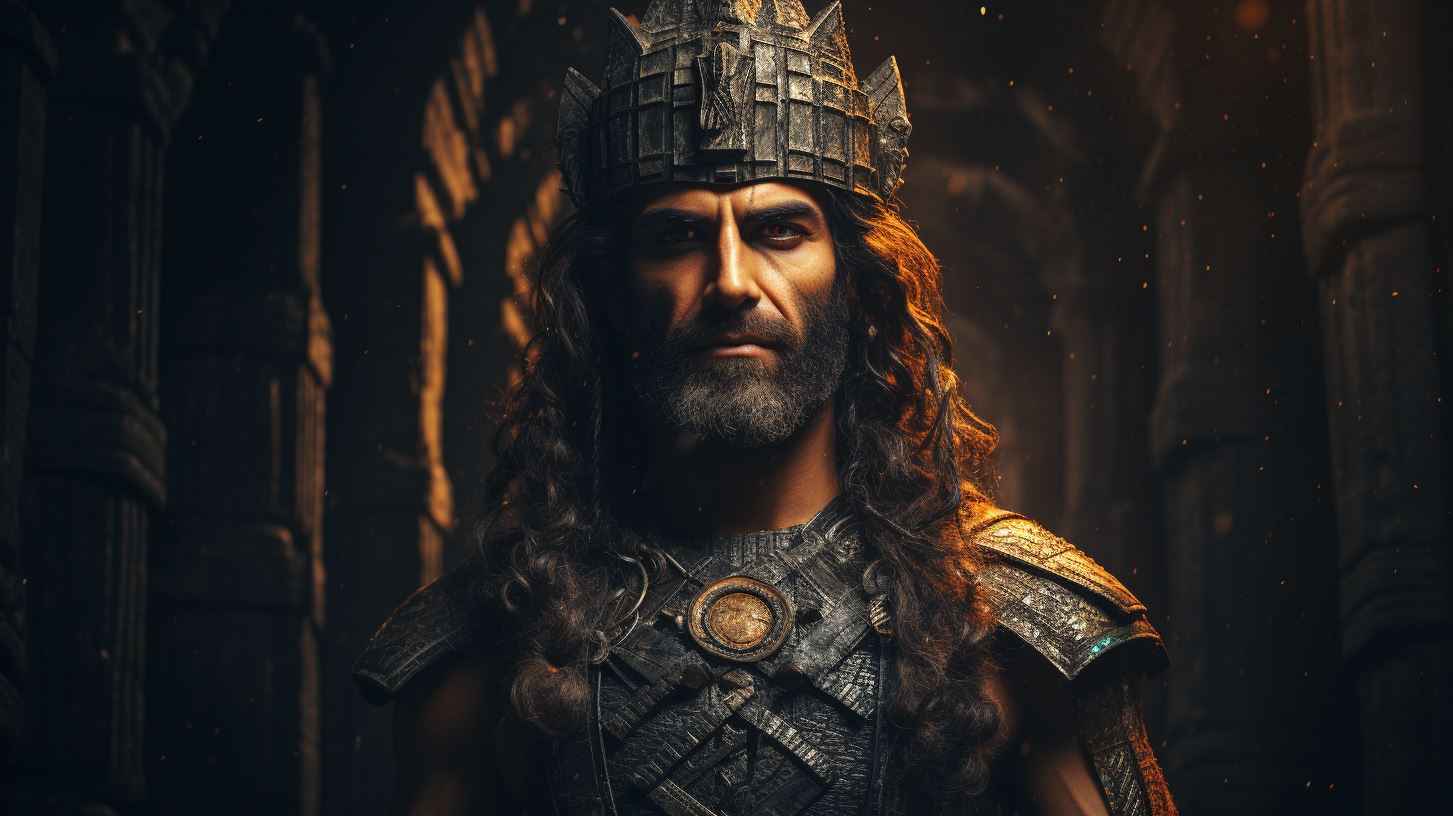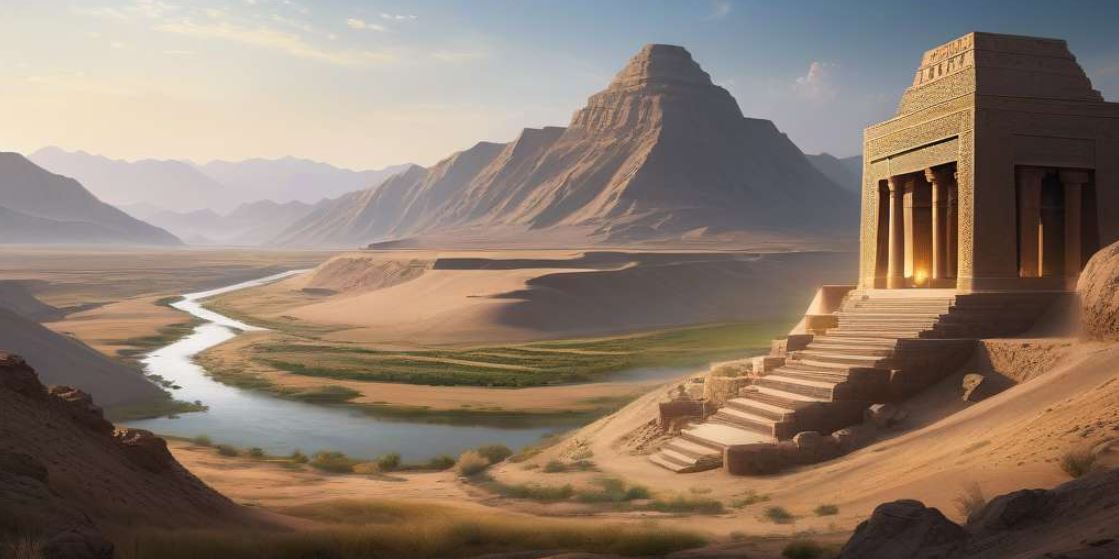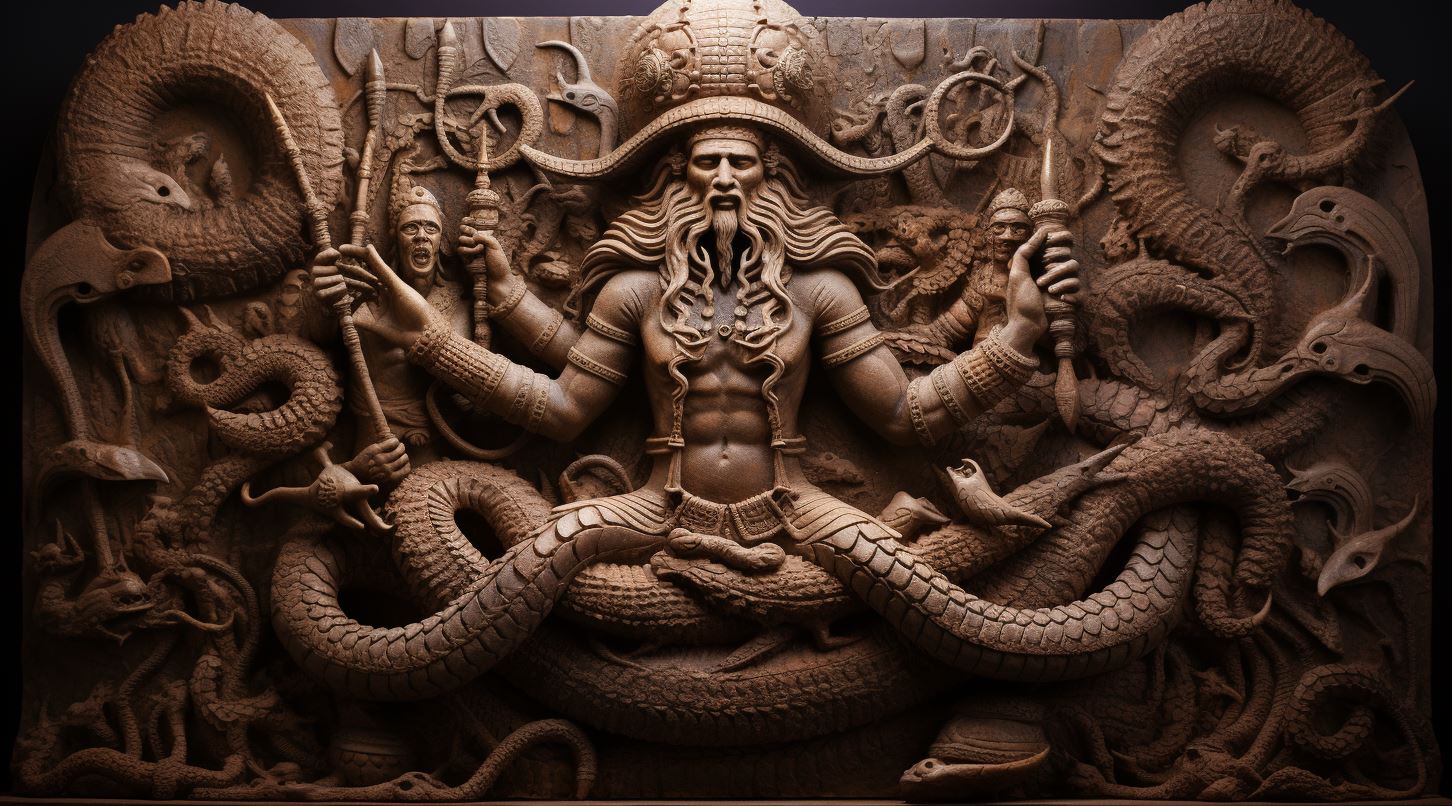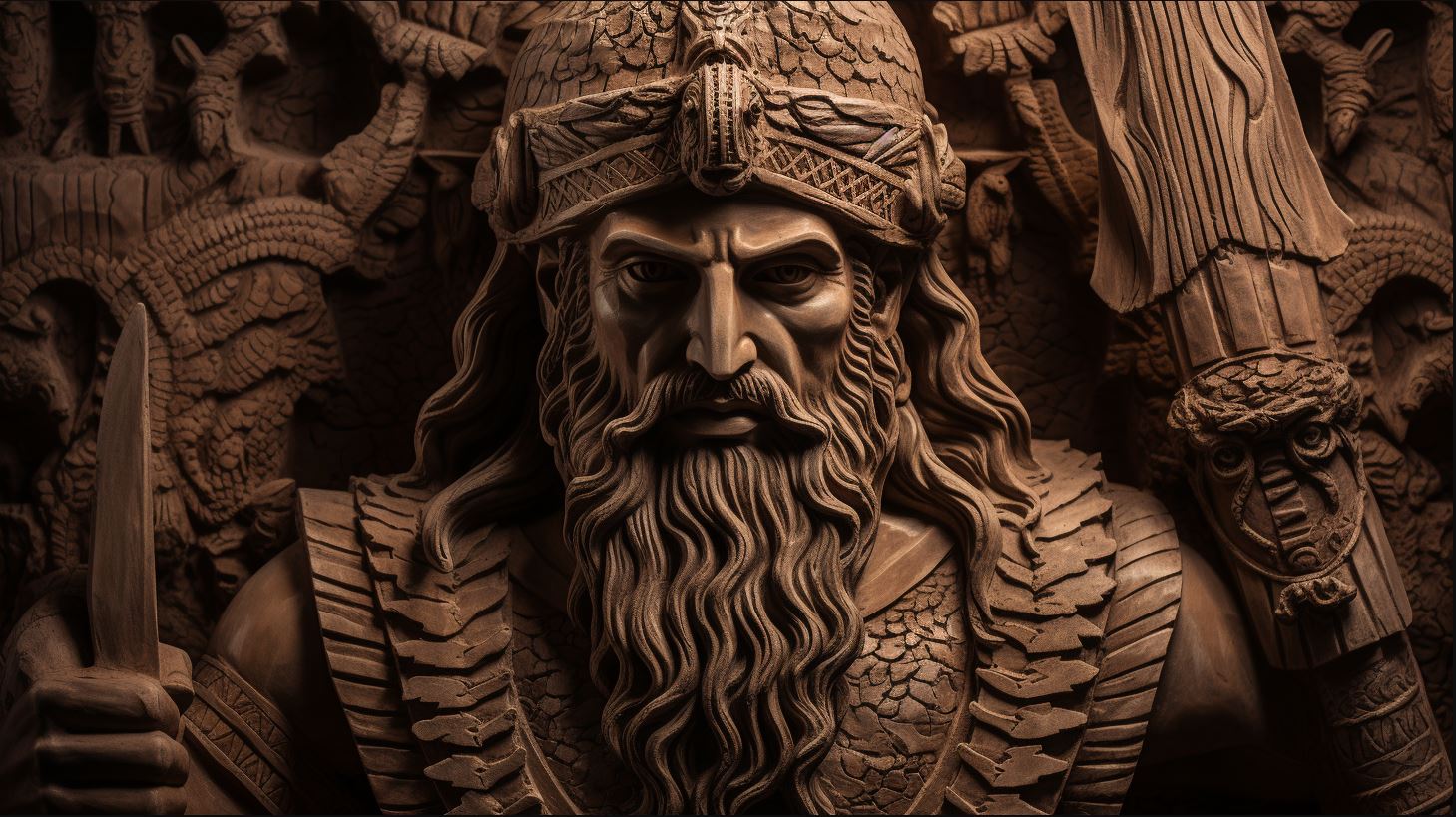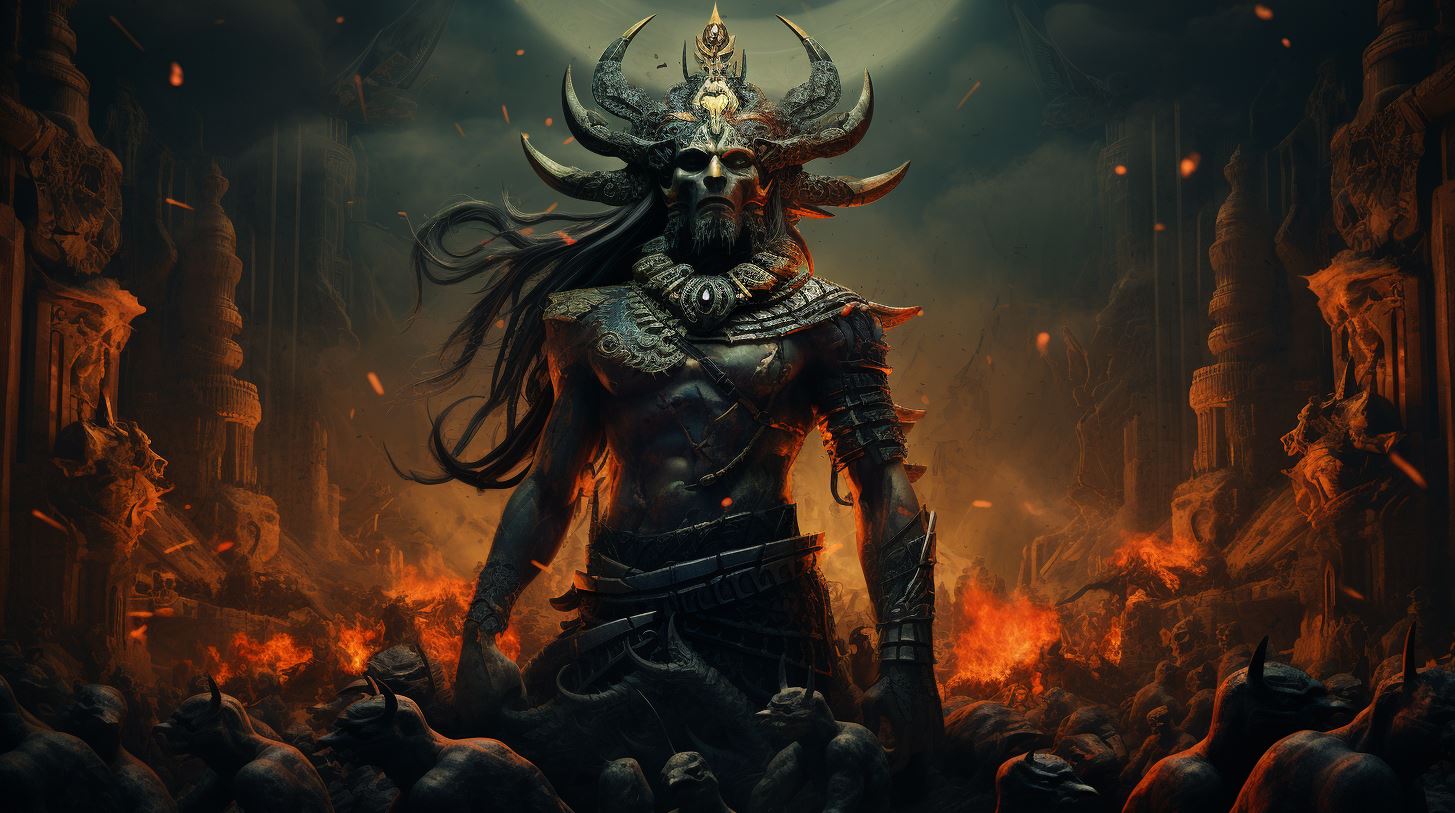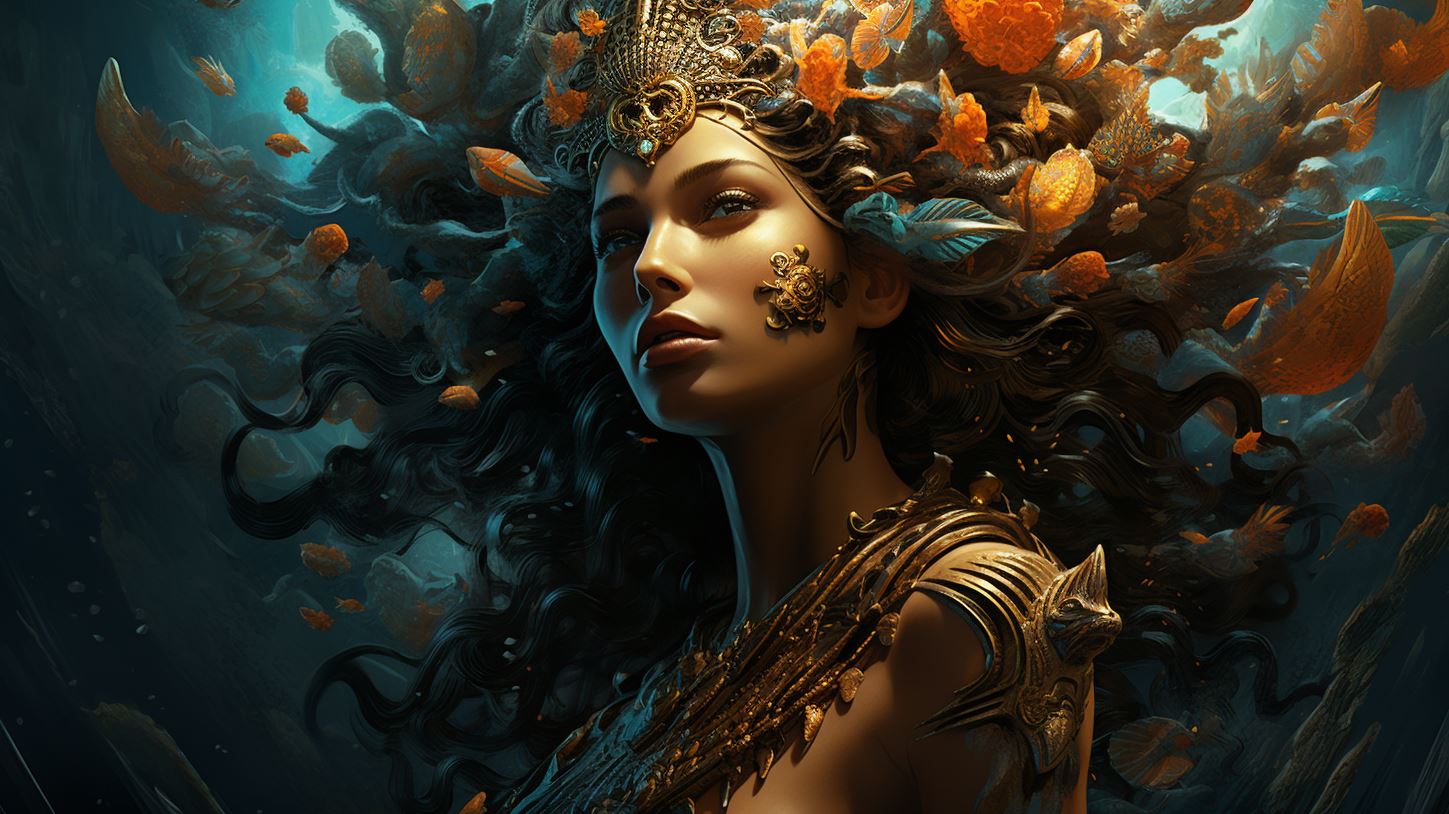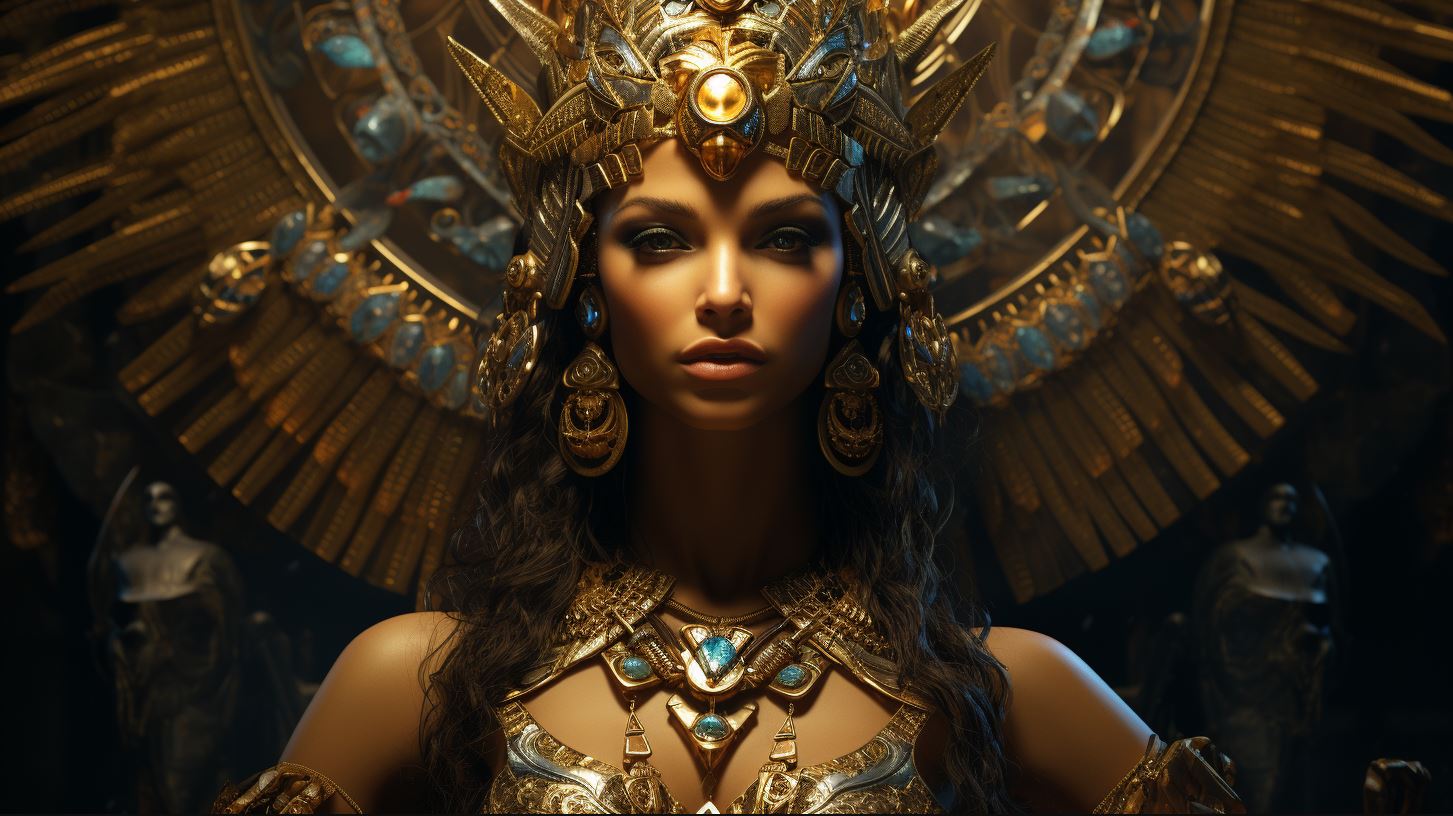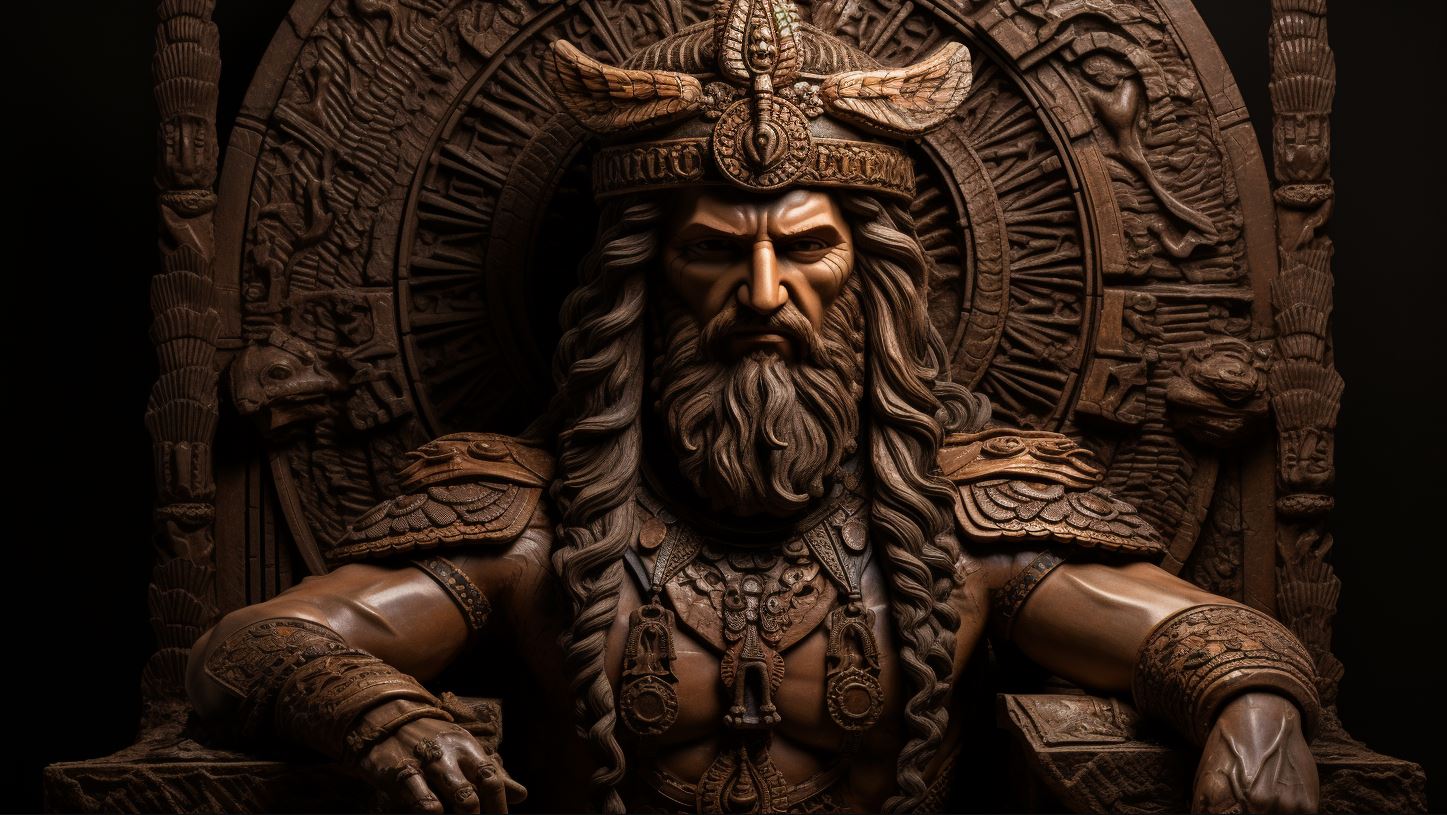Kulla God: The Divine Architect of Mesopotamia
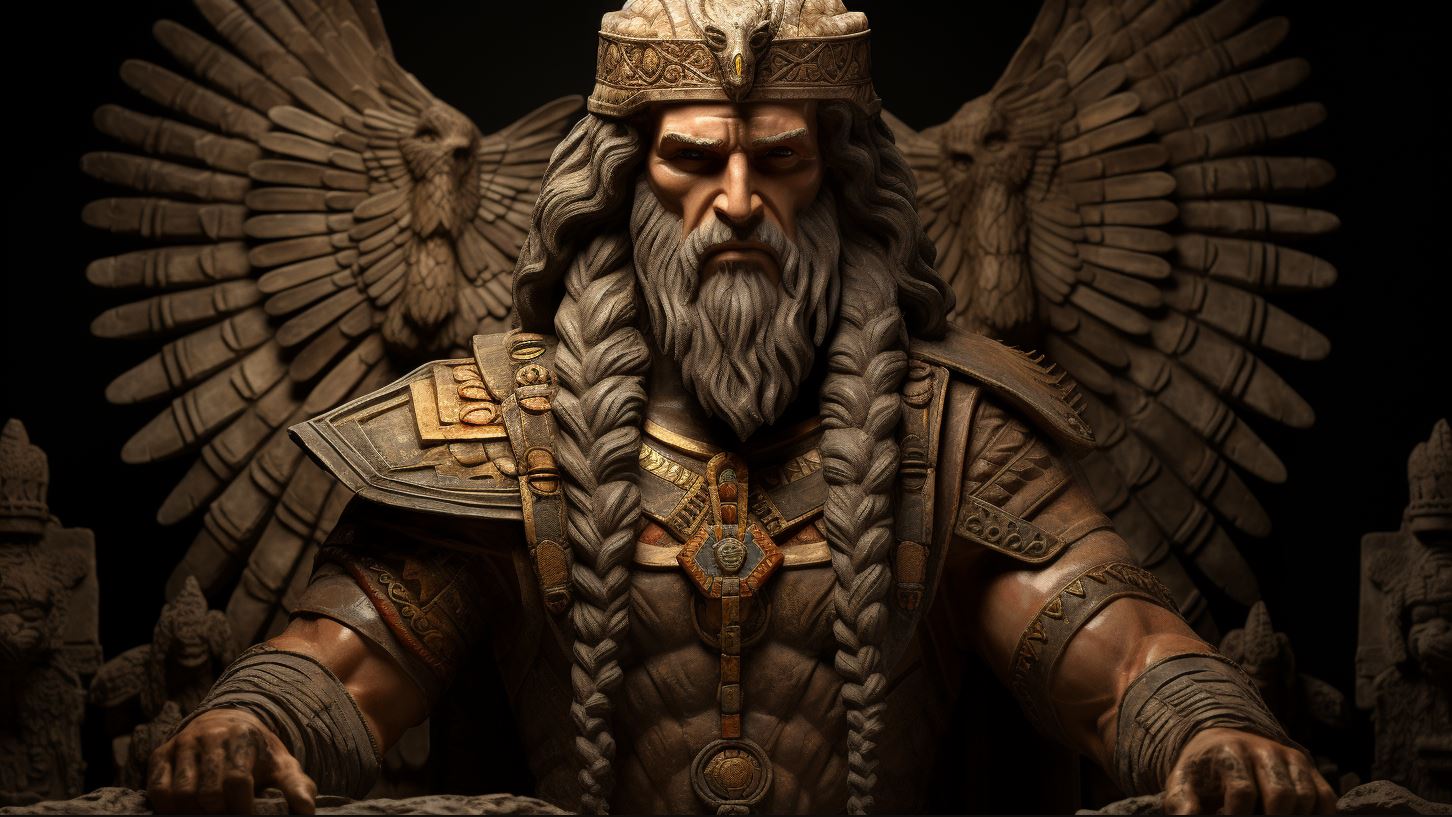
Kulla god, the divine architect in Mesopotamian mythology, held a significant role in temple restoration and construction. Rituals were performed to invoke Kulla’s protection and success during building projects.
After completion, an exorcism ritual was conducted to bid farewell to Kulla. The name ‘Kulla’ can also be found in various cultural contexts, including Estonia, Dagestan, India, and Madhya Pradesh. Additionally, Kulla is mentioned as a subcaste in Sindh and Rajasthan.
In modern culture, Kulla is represented through unique merchandise like the “Kulla the Brick God Pin.” Discover more about Kulla’s mythology and cultural influences in this article.
Meet Kulla: The Divine Architect
Welcome to the fascinating world of Kulla, the divine architect.
In this section, we will explore the origins and role of Kulla in Mesopotamian mythology. Discover the intriguing story behind this important deity associated with construction and temple restoration.
Origins and Role of Kulla in Mesopotamian Mythology
In Mesopotamian mythology, Kulla holds a prominent position as a god associated with bricks and architecture. According to ancient beliefs, Kulla was created by the god Ea using a piece of clay from the primordial ocean.
This divine architect was responsible for the restoration and construction of temples, earning him the title of the “architect of the gods.”
Kulla’s role as a divine force linked to construction showcases the significance attributed to building projects in the ancient Mesopotamian civilizations.
The mythology surrounding Kulla sheds light on the deep reverence and importance given to architectural endeavors and the divine protection sought for such endeavors.
As we delve further into Kulla’s mythology, we will explore the rituals and traditions associated with invoking and bidding farewell to this divine architect. These practices provide insights into the beliefs and customs surrounding construction activities and the desire for divine blessings and success.
Rituals and Traditions Associated with Kulla God
In the realm of Mesopotamian mythology, Kulla god was not only revered as the divine architect but also held great significance in construction rituals and traditions. These practices aimed to invoke divine blessings and ensure the successful completion of building projects.
There were two major aspects related to Kulla’s role in these rituals: construction invocations and offerings, as well as exorcism rituals to bid farewell to Kulla once the construction was finished.
Construction Invocations and Offerings to Kulla
Construction projects in ancient Mesopotamia were preceded by elaborate rituals dedicated to invoking the divine protection and guidance of Kulla. Builders and priests would gather at the construction site and perform sacred ceremonies to seek blessings for a prosperous and trouble-free endeavor.
As part of the ritual, a vessel of sacred water containing various objects would be placed in the foundation of the building, symbolizing Kulla’s presence and protection throughout the construction process.
Sacrifices and prayers were offered to demonstrate reverence and to ensure divine assistance in the project’s success.
Exorcism Rituals to Bid Farewell to Kulla
Once the construction reached its completion, another set of rituals, known as exorcism rituals, were performed to bid farewell to Kulla and remove his presence from the premises. Builders would gather once again, but this time to sever the connection between Kulla and the constructed edifice.
Symbolizing this detachment, they would load a symbolic brick and provisions onto a boat, which would then be sent downriver, effectively carrying away Kulla’s influence. The breaking of tablets and their immersion in the river formed a crucial component of this ritual, ensuring the complete departure of Kulla from the site.
Kulla God in Different Cultural Contexts
Kulla, the divine architect in Mesopotamian mythology, has left his mark beyond the boundaries of ancient Mesopotamia. The name ‘Kulla’ resonates in various cultural contexts around the world, showcasing the widespread influence of this deity.
The Name ‘Kulla’ in Estonia, Dagestan, India, and Madhya Pradesh
In Estonia, Dagestan, India, and Madhya Pradesh, the name ‘Kulla’ holds significance and can be found associated with different cultural aspects. While the exact origins and meanings may vary, the presence of ‘Kulla’ in these regions suggests a shared connection to the divine and architectural realms.
In Estonia, ‘Kulla’ may refer to specific locations or landmarks, reflecting the deep-rooted belief in the divine representation of Kulla within their cultural heritage.
Similarly, in Dagestan, the name ‘Kulla’ carries cultural significance, representing sacred sites or areas where the divine architectural presence is acknowledged.
In India and Madhya Pradesh, ‘Kulla’ may be an epithet attributed to local deities associated with construction, further emphasizing their importance in the architectural context within these regions.
Kulla as a Subcaste in Sindh and Rajasthan
In Sindh and Rajasthan, the name ‘Kulla’ is also associated with a subcaste within the larger Mangrio tribe.
Members of this subcaste identify themselves as ‘Kulla’ and have their unique cultural practices and traditions.
The ‘Kulla’ subcaste, embedded within the fabric of Sindh and Rajasthan, represents a distinct cultural group influenced by their ancestral ties and the reverence they hold for Kulla as a divine being associated with construction and architecture.
The presence of ‘Kulla’ as a subcaste highlights the historical and cultural diversity in the regions of Sindh and Rajasthan, enhancing our understanding of the multifaceted nature of Kulla’s cultural significance.
Exploring Kulla God in Modern Culture
As Kulla god continues to captivate the imaginations of mythology enthusiasts, the ancient deity finds new life within modern culture. Let’s delve into the various representations and unique aspects that showcase Kulla’s enduring influence.
Kulla the Brick God Pin: A Unique Representation
One remarkable embodiment of Kulla’s presence in contemporary culture is the ‘Kulla the Brick God Pin.’ Designed by the talented artist Igby Tiger, this pin showcases a captivating representation of the divine architect.
With intricate details and a touch of mystique, the pin serves as both a fashionable accessory and a symbol of reverence for Kulla.
Available for purchase at select retailers, the ‘Kulla the Brick God Pin’ is just one example of the diverse range of merchandise inspired by mythological themes.
It resonates with those who appreciate the blend of ancient mythology and modern aesthetics, making it a sought-after item among collectors, enthusiasts, and individuals looking for unique pieces of wearable art.
Whether proudly displayed on a lapel, pinned to a bag, or added to a curated collection, the ‘Kulla the Brick God Pin’ serves as a tangible connection to Mesopotamian mythology, inviting conversations and sparking curiosity about Kulla’s role as the divine architect.
- Symbolizes the influence of ancient Mesopotamian mythology in contemporary culture
- Designed by Igby Tiger, a renowned artist
- Captivating representation of Kulla god, the divine architect
- Exudes a sense of mystique and reverence
- Reflects the perfect blend of ancient mythology and modern aesthetics
- Appreciated by collectors, enthusiasts, and individuals seeking unique wearable art
- Available for purchase at select retailers
As individuals embrace the ‘Kulla the Brick God Pin’ and other mythological-inspired products, Kulla’s legacy remains alive, symbolizing the enduring power of ancient deities and their ability to transcend time and cultural boundaries.
Stay tuned for more captivating mythological insights as we continue to explore the fascinating world of Kulla and its multifaceted impact on modern culture.
Frequently Asked Questions about Kulla God
- What is the origin of Kulla in Mesopotamian mythology?
- What rituals are associated with Kulla god in construction?
- What was the exorcism ritual to send Kulla away?
- Where else is the name ‘Kulla’ mentioned?
- Are there any modern representations of Kulla god?
Kulla, the divine architect, was believed to have been created by the god Ea using a piece of clay from the primordial ocean.
He was associated with bricks and construction, responsible for restoring temples and held the title of the divine architect.
Prior to initiating a construction project, rituals were performed to invoke Kulla’s protection and ensure success.
A sacred vessel filled with water and various objects was placed in the foundation of the house. Sacrifices and prayers were offered to secure divine blessings.
Once the construction was completed, an exorcism ritual was performed to bid farewell to Kulla.
A symbolic brick and its provisions were loaded onto a boat and sent downstream, while tablets were broken and thrown into the river as part of the ritual.
Aside from Mesopotamian mythology, the name ‘Kulla’ can be found in various geographical contexts.
It is mentioned in places like Estonia, Dagestan, India, and Madhya Pradesh. Additionally, Kulla is known as a subcaste within the Mangrio tribe in Sindh and Rajasthan.
Yes, there are modern representations of Kulla.
One notable example is the ‘Kulla the Brick God Pin’ designed by artist Igby Tiger. This pin showcases a depiction of the deity Kulla and can be purchased from a store offering a variety of products related to themes like retro science fiction, nature and animals, and the occult and macabre.
Related Products and Merchandise
Immerse yourself in the captivating world of Kulla god with a range of unique and intriguing merchandise inspired by this divine figure. Whether you are a mythology enthusiast or simply drawn to the mystique of ancient deities, these products offer a way to connect with Kulla’s essence and symbolism.
Kulla the Brick God Pin: A Unique Representation
One standout item is the exquisite ‘Kulla the Brick God Pin’ designed by the talented artist Igby Tiger. This pin features a stunning representation of Kulla, showcasing his importance as the divine architect in Mesopotamian mythology.
The intricate craftsmanship and attention to detail make it a compelling addition to any pin collection.
Mythology-inspired Art Prints and Posters
Decorate your space with captivating art prints and posters that bring the essence of Kulla god into your home. Choose from a selection of mesmerizing designs that embody the architectural prowess and divine energy associated with Kulla.
These prints serve as a constant reminder of the rich mythological heritage and the enduring power of ancient gods.
Symbolic Jewelry and Accessories
Wear your devotion to Kulla god with pride through symbolic jewelry and accessories. Explore a diverse range of pendants, necklaces, and bracelets that feature intricate designs inspired by Kulla’s association with architecture and construction.
These pieces serve as wearable art, allowing you to carry the essence of Kulla’s divine energy wherever you go.
Mystical Home Decor
Infuse your living space with an aura of mystique by incorporating mystical home decor inspired by Kulla god. From intricately carved sculptures to ornate candle holders, these unique decor pieces add a touch of ancient splendor to your surroundings.
Channel the divine energy of Kulla and create an ambiance that reflects your appreciation for mythological significance.
Books and Literature
If you crave a deeper understanding of Kulla god and his role in Mesopotamian mythology, explore a variety of books and literature dedicated to this intriguing deity. Dive into captivating tales, scholarly investigations, and insightful analysis to uncover the enigmatic world of Kulla and his divine influence on ancient civilizations.
Immerse yourself in the captivating world of Kulla god and explore these fascinating products and merchandise inspired by his symbolism and mythology. Surround yourself with reminders of this divine architect and embark on a journey of mythological exploration and appreciation.

